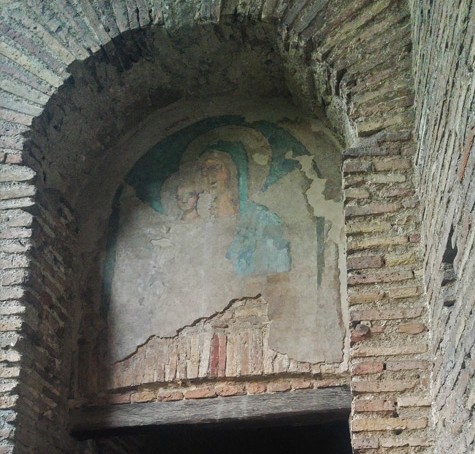The painting of the Virgin and Child on the wall above the entrance to the third tower, attributed to the 15th century, has been linked to the presence of a hermit who used the tower as a hermitage. This hypothesis seems supported by the still-visible hinges of a door, evidently designed to isolate the space from the walkway. This hermit would have been one of the many hermits who, starting in the Middle Ages, populated the Aurelian Walls and other ancient ruins of the city. Oratories, hermitages, and devotional images placed as votive offerings and to protect the sites, the so-called “Madonnelle,” were distributed along the Walls and particularly in the towers starting in the 13th century. This is an expression of popular worship, of which iconographic and literary evidence remains. The Acts of Saint Dominic (13th century), for example, tell the story of a woman named Bona who had retired to live in a tower of the Aurelian Walls, near the Basilica of Santa Croce in Gerusalemme. In the 16th century, Fra Mariano da Firenze recorded the existence of a tower near the same basilica where Saint Francis lived, as if in a hermitage. Other sacred images, now lost or no longer identifiable, include the notes of Francesco Randone (1864-1935), the Master of the Walls, who saw “praying friars” depicted in a tower on Corso d’Italia and the depiction of a martyr near Porta Maggiore. Recent excavations in the Porta Asinari area have revealed a section of the Walls with traces of medieval reuse, which will soon be opened to the public. Among these is a pictorial decoration featuring heraldic and figurative motifs. Of particular interest is the image of a pilgrim.

Third tower of the Porta San Sebastiano walkway.
Third tower of the Porta San Sebastiano walkway.


